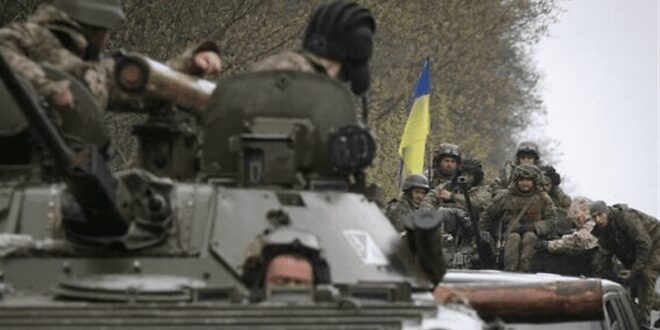- Battlefield Assessment
Russia made incremental gains across multiple fronts this week. In east and northeast Ukraine, the Kremlin’s forces launched an increased number of aerial and ground attacks in multiple areas, such as Pokrovsk and Kramatorsk. Positional clashes also continued along several flashpoints, including Kupiansk, Nevske, and the wider Bakhmut area. Mounting skirmishes were particularly intense in Siversk, according to the Ukrainian General Staff. Satellite imagery and open-source intelligence illustrate howdelays and restrictions in Western military aid have been costly for Ukraine, especially in Kharkiv.
In several engagements, the Ukrainian military successfully employed mini drones against the Russian military’s heavy armor, but could not halt the Kremlin’s advances. In the south, Ukraine has managed to put constant pressure on Crimea with its Army Tactical Missile Systems (ATACMS). In a recent strike, Ukrainian missile forces destroyed Russian S-300 and S-400 batteries in occupied Crimea.
The situation in the town of Chasiv Yar is deteriorating for Ukraine. With the support of elements from the 98th VDV Division, the 200th Motor-Rifle Brigade, the 58th Spetsnaz Battalion, and a significant number of first-person-view (FPV) drones, Russia has expanded its offensive around this critical town. Clashes in the southern sector have remained mostly positional, albeit with a more intense tempo, resulting in marginal territorial gains for Moscow.
While intensifying its ground assaults, the Kremlin has maintained pressure on Ukrainian civilians and critical infrastructure. Reportedly, Russian air strikes this week destroyed over half of Ukraine’s electricity generation capacity, causing significant power outages in Kyiv. Some assessments conclude that future attacks on Ukraine’s power grid could restrict the nation’s electricity supply to only a few hours per day.
In the meantime, Kyiv is taking the fight well beyond its borders. Open-source indicators suggest that Ukrainian Special Forces have been fighting alongside armed rebels in Syria since March 2024 to wear down Russia’s military overseas. Previously, Ukrainian Defense Intelligence (GUR) dispatched detachments to Sudan to prey on Russia’s Wagner private military company.
- Ukrainian Robotic Warfare Assets Hit Russia Again
Open-source intelligence suggests that Ukrainian asymmetric naval warfare capabilities, primarily unmanned surface vehicles (USVs), continue to press Kyiv’s asymmetric advantage against Russia. Satellite imagery indicates that the Russian Navy moved its Kilo-class submarine Rostov-on-Don to a new hidden location in the Crimean port of Sevastopol. Able to launch Kalibr cruise missiles, the Kilo-class submarine is an important asset in Russian strike packages. In September 2023, the submarine fell victim to Ukrainian strikes using French and British Storm Shadow cruise missiles. Reports suggest that Russia has camouflaged the submarine to hide it from further strikes, though the platform is not currently seaworthy and may be beyond repair.
Meanwhile, Kyiv’s improving unmanned capabilities are now providing benefits in the land warfare domain. Ukraine increasingly deploys unmanned ground vehicles (UGVs) on the front lines to compensate for its lack of manpower. Reportedly, these UGVs now shoulder critical tasks, including kamikaze strike missions and mining operations. The unmanned vehicles can carry TM-62 anti-tank mines or up to 88 pounds of payload. Moving at a maximum speed of 20 miles per hour, these systems can remotely mine enemy positions and logistical routes with anti-tank mines up to three miles from their operator.
Kyiv also conducted two pinpoint strikes on key facilities deep inside Russia last week. In one salvo, Ukrainian long-range drones struck the critical Mozdok airbase, a facility that hosts several high-value aircraft, including Tu-22M tactical bombers, Su-24 frontline bombers, and dozens of military helicopters. In another strike, Kyiv hit a Sukhoi-57, Russia’s most advanced fighter jet, with a rain of drones. This strike, the first on a Su-57 since the start of the war, occurred hundreds of miles inside Russia at the Akhtubinsk airbase, showcasing Kyiv’s fast-improving deep strike capability.
To supplement its deep strike capabilities and robotic warfare resources, Ukraine is adding new assets to its asymmetric toolkit. News outlets reported that on June 3, Ukraine conducted a large-scale cyberattack against a network of Russian communications outfits, including Roskomnadzor, Russia’s state communications regulator. The attack also reportedly hindered the digital activities of significant government institutions, including Moscow’s Ministries of Defense, Finance, and Emergency Situations.
- All Eyes on the Coming NATO Summit in Washington
After Sweden’s announcement that it will provide Ukraine with airborne early warning and control aircraft, France announced it would send an undisclosed number of Mirage 2000-5 combat aircraft to Kyiv. This decision further augments the Ukrainian military’s assemblage of high-end weapons systems. The Mirage 2000-5’s ability to track multiple targets simultaneously and sophisticated air-to-ground strike functionality make it another valuable asset to complement Kyiv’s F-16s.
As Ukraine upgrades its warfighting capabilities, the upcoming North Atlantic Treaty Organization (NATO) summit in Washington will mark a critical milestone in the relationship between the alliance and Kyiv. News reports indicate that in July, the 32 NATO member states will offerUkrainian President Volodymyr Zelenskyy a series of security agreements in a multiyear assistance package intended to serve as a bridge to full NATO membership.
While some assessments suggest that Ukraine has a long road ahead in its journey to full membership in NATO, the forthcoming package will outline certain deliverables to accelerate Kyiv’s path to membership. Meanwhile, many member states have explored coproduction opportunities with the Ukrainian defense technological and industrial base (DTIB) to speed the country’s transition from a Soviet-vintage military to a Western fighting force.
The European Union is engaging in similar efforts. On May 6, Kyiv and Brussels held an EU-Ukraine Defense Forum to explore joint defense technology production opportunities. Just a month later, the Ukrainian Parliament ratified the terms for the Ukraine Facility, the EU’s four-year macro-finance support package to Kyiv. With its first €17 billion forecast for delivery before the end of 2024, the financial assistance agreement will provide Kyiv with €50 billion in total to help Ukraine implement the reforms and recovery needed for its accession to the EU.
 Eurasia Press & News
Eurasia Press & News



